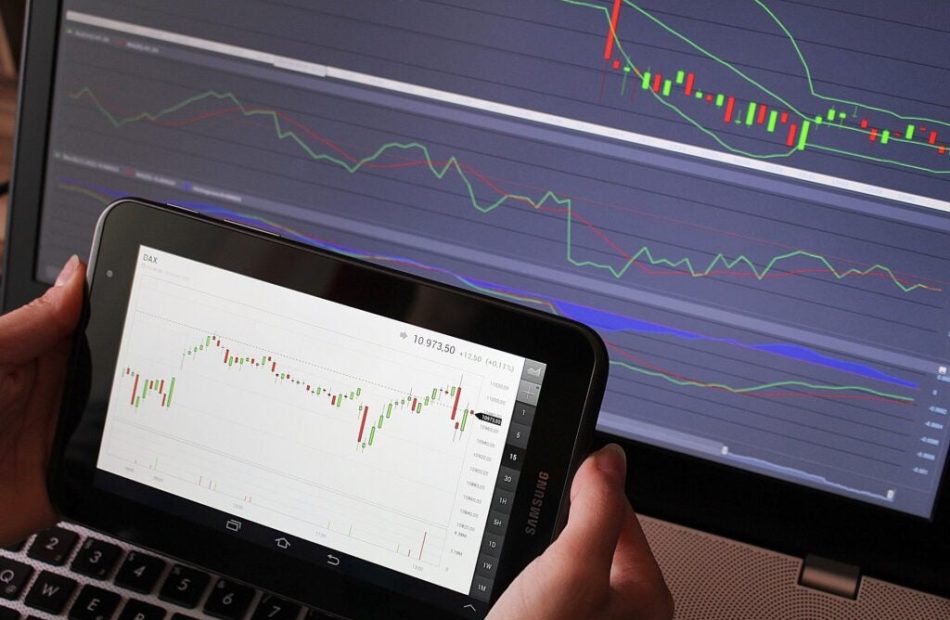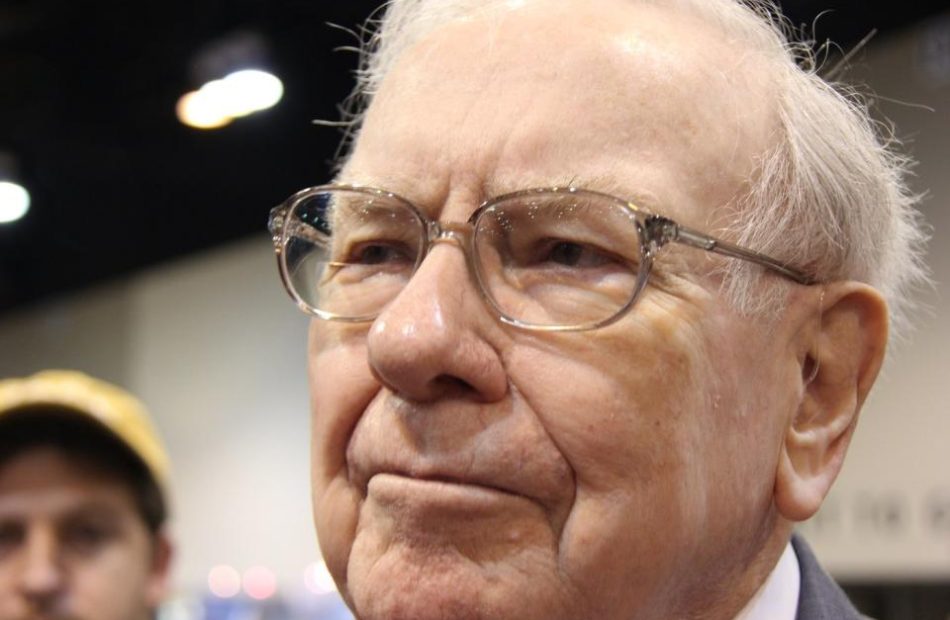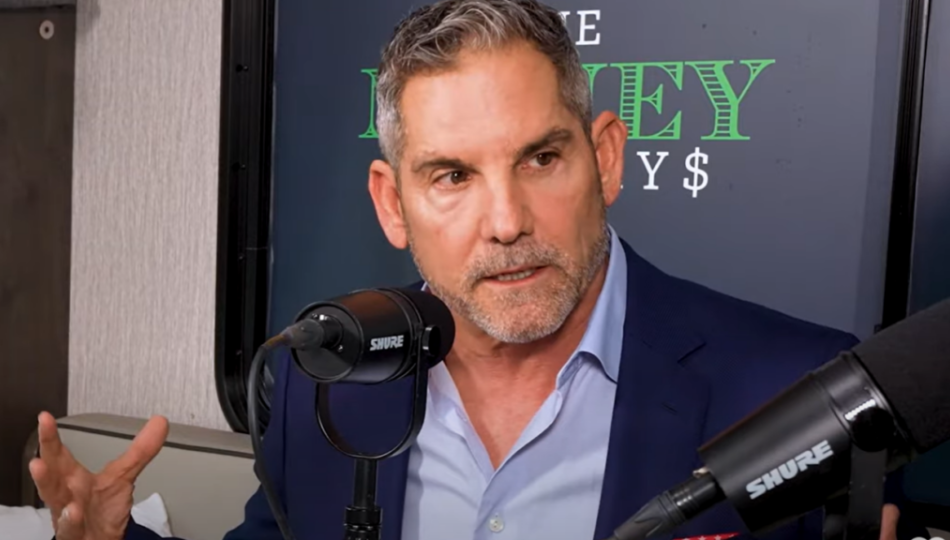Schwab's Secret to Doubling Your Retirement Fund
After beginning the year at record levels, global events have caused market volatility to jump and equities to fall. The S&P 500 Index is experiencing its first major correction since 2020, so investors are understandably looking to safeguard their assets. Investment firm Charles Schwab says that increased diversification is the key to weathering such an investment climate. However, according to recent research, most self-directed retirement savers just aren’t protecting their hard-earned funds in the right ways. In fact, investors who engage a financial advisor have saved nearly twice as much for retirement as those who don’t. Here’s why.
A financial advisor could help you save for retirement and select investments that align with your financial goals. Find a qualified advisor today.
Schwab Research Demonstrates the Power of Financial Advice
Taking data from its Preferred Choice Retirement Accounts (PCRAs), a self-directed brokerage account offered within defined contribution retirement plans, Charles Schwab has found that, for the first quarter of 2022, plan participants who work with financial advisors had an average balance of $535,354–nearly twice as much as the $286,008 held by non-advised participants.
Broken down by age group, Schwab analysts found that, perhaps unsurprisingly, Baby Boomers (aged 58 to 75) held the largest balances of all the PCRAs, averaging $520,616. Gen X participants, aged 42-57, held an average of $299,520 and Millennials, aged 30-41, had $102,113.
Of the total PCRA participants, only 19.2% chose to work with a financial advisor, but of those, roughly half of the advised accounts belonged to the Gen X grouping. Baby Boomers held 32.5% of the advised accounts and Millennials held 14.9%.
Notably, working with a financial advisor meant more trades in the last quarter than not, averaging 19.7 trades vs. 12.3 for the non-advised. Furthermore, advised participants had a more diverse allocation of assets and a lower concentration of individual equities.
If you’re ready to be matched with local advisors that can help you achieve your financial goals, get started now.
How Retirement Savers Can Take Advantage
Working with a financial advisor can help savers pinpoint a suitable strategy for their finances, relieving some of the stress associated with working towards a large financial goal like retirement. Given an investor’s risk tolerance, time horizon and other factors, not every investment strategy may prove suitable.
Schwab’s data provides some food for thought. First, advised accounts diversified their holdings, not putting more than 4.05% in any one exchange-traded fund (ETF). Although advised participants held similar equities to the non-advised–Apple stock coming in strong first for both groups–the percentage was slightly lower, 9.37% of advised equity assets in Apple vs. 12.59% for the non-advised.
Advised participants also held a lower percentage in cash, 5.70% vs. 15.71% for the non-advised. While that may protect assets from a dive in market value, timing the market is difficult and holding a greater percentage of funds in cash could reduce the long-term earning potential of an investor’s portfolio. At the same time, advisors seemed to favor a 17.57% mutual fund asset allocation, whereas non-advised participants held 20.10% in mutual funds. According to the data, advised participants appeared to increase fixed-income assets from Q4 2021.
Consider speaking with a financial advisor to build a retirement plan aimed at your personal goals.
Bottom Line
Recent data from Charles Schwab indicates that retirement plan participants who work with a financial advisor can nearly double the amount they save for retirement. Financial advisors seemed to favor a heartier diversification strategy, reducing exposure to individual assets and thereby reducing risk in this volatile market. While non-advised participants seemed to choose similar equities and funds for their investments, targeted financial advice may have resulted in improved portfolio outcomes.
Wealth-Building Tips
-
Not sure what asset allocation mix and strategies will help you meet your long-term goals? For a solid financial plan, consider speaking with a qualified financial advisor. SmartAsset’s free tool matches you with up to three financial advisors who serve your area, and you can interview your advisor matches at no cost to decide which one is right for you. If you’re ready to find an advisor who can help you achieve your financial goals, get started now.
-
Use SmartAsset’s free investment calculator to get a good estimate of how to grow your money over time.
-
Keep an emergency fund on hand in case you run into unexpected expenses. An emergency fund should be liquid — in an account that isn’t at risk of significant fluctuation like the stock market. The tradeoff is that the value of liquid cash can be eroded by inflation. But a high-interest account allows you to earn compound interest. Compare savings accounts from these banks.
-
Are you a financial advisor looking to grow your business? SmartAsset AMP helps advisors connect with leads and offers marketing automation solutions so you can spend more time making conversions. Learn more about SmartAsset AMP.
Don’t miss out on news that could impact your finances. Get news and tips to make smarter financial decisions with SmartAsset’s semi-weekly email. It’s 100% free and you can unsubscribe at any time. Sign up today.
For important disclosures regarding SmartAsset, please click here.
Photo credit: ©iStock.com/marchmeena29, ©iStock.com/designer491, ©iStock.com/FG Trade
The post Schwab Says This Can Double Your Retirement Savings appeared first on SmartAsset Blog.
Stock market today: Nasdaq leads rough kickoff to September as Nvidia sell-off continues
Investors began September trading with a thud as stocks tumbled on Tuesday to start a historically tough month for markets, with AI darling Nvidia (NVDA) and chip names leading tech stocks down. The turn into the red comes amid a crucial week of data on the economy and labor market highlighted by an influential monthly jobs report.
The Dow Jones Industrial Average (^DJI) slid 1.5%, or over 600 points. The S&P 500 (^GSPC) dropped 2.1%, while the tech-heavy Nasdaq Composite (^IXIC) pulled back 3.3%.
Stocks are retreating from near highs as Wall Street hunkers down after a rollercoaster August, with the prospect of a potentially stormy September ahead. Investors are assessing the risk of data shocks or presidential race surprises in a month that’s typically terrible for traders.
Nvidia (NVDA) fell almost 10% Tuesday, as investors continue to withdraw following a lackluster earnings report and lingering questions about the future of the AI trade. Other chip stocks fell in tandem, with Broadcom (AVGO), Qualcomm (QCOM), and Taiwan Semiconductor Manufacturing Company (TSM) all down more than 6%.
Also top of mind is the August jobs report, due out on Friday, which could influence how deeply the Federal Reserve cuts interest rates at its meeting this month. With inflation now cooling, policymakers are on alert for the labor market to fall into place.
For investors, the focus is on whether the signs of slowing in the July jobs report were overstated — or an early warning of a broader slowdown. Any hints of stress should put pressure on the Fed to make a bigger reduction in rates. As of Tuesday, traders were pricing in 39% odds of a 50 basis point cut instead of 25 basis points, per the CME FedWatch Tool.
A measure of US manufacturing ticked up last month, according to fresh figures from the Institute for Supply Management (ISM). But the metric reflected slowed factory activity, with a reading below a threshold that suggests a contraction in the manufacturing sector.
Live10 updates
A Single Deal With Elon Musk's Tesla Catapulted This Unknown Family To An $800 Million Fortune
One South Korean family has almost reached billionaire status, thanks to a deal with Elon Musk’s Tesla Inc.
Don’t Miss:
L&F Co., a company that makes cathodes for electric vehicle batteries, landed a $2.9 billion order from Tesla, according to a 2023 Bloomberg report. This windfall has pushed the Jae-hong family’s net worth to over $800 million.
L&F might not be a name you recognize, but it plays a big role in the electric vehicle world. The company was founded in 2000 and began developing cathode materials in 2005. While it has been supplying Tesla through LG Energy Solution for a while, this direct deal with Tesla is a major milestone.
Trending:
The impact on L&F’s stock was pretty much immediate. After the announcement, the company’s share price skyrocketed by 82% in 2023, making the Jae-hong family, who own a significant chunk of L&F’s shares, some of South Korea’s wealthiest.
There’s more to the Jae-hong family’s story. Hur Jae-hong, the chairman of L&F, is connected to big names like LG Group and GS Group. His great-grandfather, Huh Man-jung, co-founded LG in 1947, highlighting a strong family legacy in business.
This deal is transformative for L&F’s business strategy. Previously, the company relied heavily on LG Energy Solution, which accounted for about 80% of its revenue. By 2025, analysts project this dependence will decrease to 50%, allowing L&F to diversify its client base and strengthen its market position.
See Also:
The contract with Tesla is set to run from Jan. 1, 2024, to Dec. 31, 2025. L&F will provide high-nickel cathode materials for use in the automotive, energy generation and storage sectors in the U.S. and other regions.
Industry experts estimate that the contract will supply enough material for over 780,000 electric vehicles. This could significantly boost Tesla’s production capacity, especially for larger vehicles like the Semi and Cybertruck, which are expected to use high-nickel batteries.
Trending:
Ripple effects of this deal extend beyond L&F. Other companies in the electric vehicle supply chain, such as Kumyang Co. and Ecopro Co., have also seen their stock prices soar. For instance, Ryu Kwang-ji, the chairman of chemical company Kumyang Co., saw his stake in the firm balloon to $1.4 billion after the share price surged more than 1,600% in the past year
The L&F-Tesla partnership is a prime example of how a big deal can lead to major financial success and shows how quickly the electric vehicle market is evolving.
Read Next:
“ACTIVE INVESTORS’ SECRET WEAPON” Supercharge Your Stock Market Game with the #1 “news & everything else” trading tool: Benzinga Pro – Click here to start Your 14-Day Trial Now!
Get the latest stock analysis from Benzinga?
This article A Single Deal With Elon Musk’s Tesla Catapulted This Unknown Family To An $800 Million Fortune originally appeared on Benzinga.com
© 2024 Benzinga.com. Benzinga does not provide investment advice. All rights reserved.
Why Zhibao Technology Shares Are Trading Higher By Around 19%; Here Are 20 Stocks Moving Premarket
Shares of Zhibao Technology Inc. ZBAO rose sharply in today’s pre-market trading after the company announced that it has won a tender to provide high-end medical third party administration services to the People’s Insurance Company of China Limited.
Zhibao Technology shares jumped 18.8% to $3.99 in the pre-market trading.
Here are some other stocks moving in pre-market trading.
Gainers
- Sify Technologies Limited SIFY gained 129.4% to $0.7599 in pre-market trading. Sify becomes first in India to achieve NVIDIA DGX-ready data center certification for liquid cooling to enable breakthrough AI performance.
- Aptose Biosciences Inc. APTO rose 48.1% to $0.6040 in today’s pre-market trading after the company announced a $10 million loan through a Facility Agreement with Hanmi Pharmaceutical Co.
- Conduit Pharmaceuticals Inc. CDT gained 25.8% to $0.1549 in pre-market trading after declining over 5% on Friday.
- Perfect Moment Ltd. PMNT gained 25.2% to $1.29 in pre-market trading.
- Cyclacel Pharmaceuticals Inc CYCC gained 21.7% to $1.28 in pre-market trading.
- Polar Power Inc POLA gained 18.8% to $0.47 in the pre-market trading session. Polar Power, last month, posted a profit for the second quarter.
- QuantaSing Group Ltd- ADR QSG gained 13.2% to $1.97 in pre-market trading.
- Shoals Technologies Group, Inc. SHLS rose 11.5% to $6.01 in pre-market trading.
- Autozi Internet Technology (Global) Ltd. AZI gained 5% to $3.15 in pre-market trading amid post-IPO volatility.
Losers
- Bluejay Diagnostics Inc BJDX fell 13.3% to $0.16 in pre-market trading after declining around 6% on Friday.
- Focus Universal Inc. FCUV shares fell 13.1% to $0.2338 in pre-market trading. Focus Universal shares jumped over 41% on Friday after the company in a Form4 filing disclosed that CEO Desheng Wang bought 302,100 shares of stock at an average price of $0.18 per share.
- Staffing 360 Solutions, Inc. STAF shares declined 12.1% to $2.05 in pre-market trading.
- Graphex Group Limited GRFX fell 12% to $0.21 in pre-market trading after surging 13% on Friday.
- ShiftPixy Inc PIXY shares fell 11.8% to $1.04 in pre-market trading. ShiftPixy recently announced the pricing of $2.5 million offering.
- Agape ATP Corporation ATPC shares declined 11.4% to $2.26 in pre-market trading after jumping 60% on Friday.
- Autonomix Medical Inc AMIX shares fell 10.9% to $0.60 in pre-market trading after jumping 14% on Friday.
- Theriva Biologics, Inc. TOVX fell 10% to $5.31 in today’s pre-market trading after gaining over 25% on Friday.
- United States Steel Corporation X shares dipped 5.8% to $35.70 in pre-market trading. Vice President Kamala Harris has expressed her support for American ownership of United States Steel, amidst ongoing foreign acquisition attempts.
- Diversified Energy Company PLC DEC declined 5.6% to $11.54 in pre-market trading. Keybanc analyst Tim Rezvan, last week, initiated coverage on Diversified Energy with an Overweight rating and announced a price target of $18.
Now Read This:
Market News and Data brought to you by Benzinga APIs
© 2024 Benzinga.com. Benzinga does not provide investment advice. All rights reserved.
Why ExxonMobil, ConocoPhillips, and BP Stocks Dropped Today
Tuesday is looking like a bad day to be invested in oil stocks, as downbeat news in the oil sector takes a toll on shares of oil majors ExxonMobil (NYSE: XOM), ConocoPhillips (NYSE: COP), and BP (NYSE: BP).
OilPrice.com is reporting on a “plunge” below $75 a barrel in Brent crude prices (currently $74 and change). WTI crude — more popular in the U.S. — is suffering a similar fall, down 3.8% at about $70.70 as of 10:30 a.m. ET.
Exxon stock is down 3.2% in response, followed by BP at a 3.5% decline, with Conoco bringing up the rear with a 3.7% loss.
What’s ailing oil stocks today?
OilPrice.com lays the blame for today’s sell-off squarely at the feet of OPEC — or, more precisely, OPEC+, which includes Russia and other oil producers not part of OPEC proper. Aiming to stabilize oil prices in the wake of a production cut from Libya, OPEC+ is reported to be planning to gradually increase production beginning in October, a move that would increase oil supplies and thereby lower oil prices.
What’s interesting, though, is that the size of the OPEC+ production increase — set to begin at just 180,000 barrels per day (bpd) — will barely blunt the loss of Libya’s 700,000 bpd production. Viewed in isolation, therefore, this seems a weak catalyst to do so much damage to oil prices today.
But a second factor is also weighing on oil prices: China.
It’s the globe’s biggest importer of oil, and Reuters reports that manufacturing output in the Middle Kingdom has fallen to a six-month low. Furthermore, the nation’s purchasing managers’ index slipped from 49.4 to 49.1 in July, indicating the economy is in a state of contraction currently. OilPrice posits that this is “bearish” for Chinese oil demand. And if Chinese demand is falling, that means global demand is also falling. And if you took Econ 101, you know what that means: Oil prices will fall as well.
Which is exactly what we’re seeing happen today.
Is it time to sell oil stocks?
Now here’s the good news: Oil is well known to be a cyclical industry, one in which strong prices are followed by weak prices and vice versa. If you can be patient, therefore, it’s likely that oil prices will improve, and with them, the popularity of oil stocks like Exxon, BP, and Conoco.
And it’s not as if these three stocks are terribly expensive!
Valued at 14 times trailing earnings, ExxonMobil stock is the most expensive of the three. With long-term forecasts for 6% annual earnings growth and a dividend yield of 3.2%, Exxon stock costs more than I’d be willing to pay. But with a P/E ratio that’s less than half the S&P 500 index average of 29, Exxon still offers a relative bargain.
Conoco’s valuation is similar but better. It pays a slightly smaller dividend of 3.1% but has a slightly better forecast growth rate of 7%. And at a valuation of just 13 times earnings, Conoco stock is a bit cheaper than Exxon.
My favorite of these three oil stocks, though, is BP. Costing just 13 times earnings, like Conoco, it pays a much better dividend yield of 5.7%. Earnings growth should be tremendous next year — as much as 57% — as BP bounces back from a weak 2024. And the British oil company boasts a powerful $16.3 billion free cash flow that is more than twice its reported net income.
Call me an Anglophile if you like, but I like BP stock better than either Exxon or Conoco stock today.
Should you invest $1,000 in ExxonMobil right now?
Before you buy stock in ExxonMobil, consider this:
The Motley Fool Stock Advisor analyst team just identified what they believe are the 10 best stocks for investors to buy now… and ExxonMobil wasn’t one of them. The 10 stocks that made the cut could produce monster returns in the coming years.
Consider when Nvidia made this list on April 15, 2005… if you invested $1,000 at the time of our recommendation, you’d have $731,449!*
Stock Advisor provides investors with an easy-to-follow blueprint for success, including guidance on building a portfolio, regular updates from analysts, and two new stock picks each month. The Stock Advisor service has more than quadrupled the return of S&P 500 since 2002*.
*Stock Advisor returns as of September 3, 2024
Rich Smith has no position in any of the stocks mentioned. The Motley Fool has positions in and recommends BP. The Motley Fool has a disclosure policy.
Why ExxonMobil, ConocoPhillips, and BP Stocks Dropped Today was originally published by The Motley Fool
This Ultra-High-Yield Dividend Stock Is Taking Matters Into Its Own Hands to Solve a Key Pain Point
Medical Properties Trust (NYSE: MPW) has battled a barrage of issues over the past several years. Chief among them has been the financial challenges of its top tenant, Steward Health Care, which filed for bankruptcy protection earlier this year. These troubles have forced the hospital-focused real estate investment trust (REIT) to cut its dividend twice over the past year, with the most recent reduction trimming its dividend yield down to around 7%.
The healthcare REIT has been working with Steward to find new operators to take over its facilities. While they have encountered obstacles with those efforts, the companies recently agreed to transfer all Steward-operated hospitals to new ownership, with Medical Properties Trust taking the reins at most facilities.
A breakthrough agreement
Medical Properties Trust and Steward have been squabbling over value, with Steward recently suing its landlord to protect the value of its hospital operations. However, they recently agreed in principle to put their differences aside to allow for the transfer of all Steward-operated hospitals to new owners. The agreement has three basic features:
-
Massachusetts hospitals: Steward will transition six of its hospital operations in Massachusetts to new operators. Medical Properties Trust and its joint venture partner, Macquarie Infrastructure Partners, previously agreed to turn these facilities over to their secured lender.
-
“Space Coast” hospitals: Steward will retain the proceeds from the sale of its “Space Coast” hospitals in Florida to pay lenders and creditors.
-
All other leased Steward facilities: Hospitals governed by Medical Properties Trust’s master lease with Steward will transfer to new interim operators. Medical Properties Trust will fund all ongoing operating expenses for these locations. Steward and Medical Properties Trust have agreed to release all claims on the secured lease obligations for these facilities.
In a sense, Medical Properties Trust will assume most of Steward’s hospital operations. It will fund the operating costs for those facilities, though other hospital companies will operate the facilities for the REIT in the interim. That will give Medical Properties Trust control over the rehoming of those facilities. It will have more time to find the right permanent operators for those hospitals that could either lease the properties from the REIT or buy the operations and underlying real estate.
A major step forward
Medical Properties’ goal throughout the bankruptcy process has been to exit its relationship with Steward. This agreement would pave the way to accomplish that objective. Steward will no longer operate any facilities owned by the REIT.
However, while this agreement will accomplish an important goal, it doesn’t completely address the situation. Medical Properties Trust will now operate these facilities with the help of interim operators instead of leasing them, so it will be on the hook for the operating costs of these facilities until it transitions them to permanent operators. That could take time.
Furthermore, while the operations should generate some income for the REIT in the interim, those earnings won’t be as stable as rental income. Some of the operations could also lose money, which was an issue for some of Steward’s facilities.
Those potential issues aside, the agreement is an important step toward getting Steward out of the picture. It will enable the REIT to find more suitable permanent operators for these facilities. It can also wait until the dust settles from the bankruptcy proceedings and potentially get more value back in the future from an eventual sale of the operations or real estate to new operators.
A potential win-win solution
Medical Properties Trust and Steward have agreed to transition all Steward-operated hospitals to new owners. The REIT will take control of several facilities and fund their operations until it can find permanent operators. While it could take some time to reach that point, it now has a pathway to achieve that goal, putting the REIT a big step closer to being in a place where it has a sustainable portfolio, financial foundation, and dividend.
Should you invest $1,000 in Medical Properties Trust right now?
Before you buy stock in Medical Properties Trust, consider this:
The Motley Fool Stock Advisor analyst team just identified what they believe are the 10 best stocks for investors to buy now… and Medical Properties Trust wasn’t one of them. The 10 stocks that made the cut could produce monster returns in the coming years.
Consider when Nvidia made this list on April 15, 2005… if you invested $1,000 at the time of our recommendation, you’d have $731,449!*
Stock Advisor provides investors with an easy-to-follow blueprint for success, including guidance on building a portfolio, regular updates from analysts, and two new stock picks each month. The Stock Advisor service has more than quadrupled the return of S&P 500 since 2002*.
*Stock Advisor returns as of August 26, 2024
Matt DiLallo has positions in Medical Properties Trust. The Motley Fool has no position in any of the stocks mentioned. The Motley Fool has a disclosure policy.
This Ultra-High-Yield Dividend Stock Is Taking Matters Into Its Own Hands to Solve a Key Pain Point was originally published by The Motley Fool
1 Stock That's a Safe Bet to Outperform the Market Long Term, According to Warren Buffett
Investors seeking better-than-average returns typically have to take on greater-than-average risk. A company that can outpace the S&P 500 with less downside in the case of a market downturn is a rare find.
In his 2023 letter to Berkshire Hathaway (NYSE: BRK.A) (NYSE: BRK.B) shareholders, Warren Buffett identified one company that has better prospects than the average American corporation. He also said it operates with less risk of losing capital, which should provide significant downside protection.
Buffett’s track record of outperforming the S&P 500 since founding his first investment partnership in 1956 is quite astounding. The average compound annual return of Berkshire Hathaway stock since Buffett took control of the business in 1965 are nearly double the index. So, when Buffett says he believes a stock can do better than average, investors listen.
The one stock Buffett thinks should do better than average
Berkshire Hathaway’s investment portfolio is valued around $318 billion.
In his most letter to shareholders, Buffett identified several stocks in the portfolio that he plans to hold indefinitely. He first calls out Berkshire’s investments in American Express (NYSE: AXP) and Coca-Cola (NYSE: KO), two investments he hasn’t added to since the mid-90s. Still, the two have grown so much in that time that they represent two of the four largest equity positions in Berkshire’s portfolio.
American Express has benefited from the shift to digital payments like credit cards. As the issuer and network operator for its credit cards, Amex guarantees control over the economics of the payment ecosystem. That’s a strong position to be in, ensuring it controls its own destiny. Recent efforts to expand its payments network internationally, increase lending, and attract younger consumers, have paid off in strong operating results.
Coca-Cola is one of the best known brands in the world. The strength of its brand and its global scale give it a considerable competitive advantage, or moat, as Buffett likes to call it. Coke’s brand strength allowed it to raise prices and protect margins amid the staggering inflation of the last few years (both domestically and abroad).
While Buffett considers both Coke and Amex wonderful businesses, they don’t earn the spot as Buffett’s top pick to outperform the average American corporation.
Over the last few years Buffett’s been accumulating a massive stake in Occidental Petroleum (NYSE: OXY). In his letter to shareholders he said he likes Occidental’s domestic oil and gas holdings as well as its carbon-capture initiatives. He praised CEO Vicki Hollub, who has taken steps to aggressively increase Occidental’s portfolio of properties.
Buffett has consistently added to Berkshire’s position in Occidental whenever its price drops below $60 per share. The stock has grown to account for 4.5% of Berkshire’s equity portfolio, even more if you include the preferred shares Buffett acquired in 2019. Weakening oil prices have led it to trade below that level recently, though, and Buffett hasn’t added any shares since June.
But Occidental isn’t Buffett’s top pick for a single stock that should outperform the market average with less downside either.
The stock Buffett notes should perform better than average is Berkshire Hathaway itself. The combination of its equity positions and wholly owned companies gives it much more potential than any single business on its own. “With our present mix of businesses, Berkshire should do a bit better than the average American corporation and, more important, should also operate with materially less risk of permanent loss of capital,” Buffett wrote to shareholders.
Buffett’s betting big
Buffett isn’t just saying Berkshire should perform better than average, he’s backing it up with cold hard cash. Practically 99% of his wealth is tied to Berkshire Hathaway’s performance. In his letter to shareholders he notes his family is also heavily invested in Berkshire, including his sister Bertie and her three daughters.
Not only has he put his own wealth into the future of Berkshire Hathaway, he’s also consistently redeployed Berkshire’s own cash to buy back shares of the stock. Since the board of directors updated the company’s share repurchase authorization in 2018 to allow Buffett to buy back shares whenever he felt they were undervalued, he’s rarely missed an opportunity to do so.
That said, Buffett did slow repurchase activity considerably in the second quarter, eschewing purchases altogether in June. That’s not necessarily a sign that Buffett feels the shares are overvalued at this point. Buffett may want to keep a giant pile of cash for a potential acquisition or to provide more flexibility for his eventual successor. (He just turned 94.) As of the end of the second quarter, Berkshire had $277 billion in cash and equivalents.
That cash offers considerable downside protection for investors. If the stock market tumbles, Buffett is well positioned to take advantage of the opportunity to buy stocks or entire companies trading below their intrinsic value.
It’s hard to consider Berkshire shares overvalued, even if it does trade for a relatively high price-to-book value (one of Buffett’s preferred valuation measures). But Buffett has deleveraged Berkshire recently, holding enough cash to cover its insurance business reserves. Meanwhile, Berkshire’s operating earnings from its wholly owned businesses totaled $42.1 billion over the past four quarters. That’s remarkable growth from the $27.6 billion the company produced in 2021.
At its current valuation, Berkshire Hathaway trades for just 23.75 times its trailing operating income. That doesn’t include investment gains, which have been substantial. If you strip out the $318 billion equity portfolio, the company is priced at 16.3 times operating earnings. And that includes a massive cash position that Buffett could invest when he finds a suitable opportunity. At that price, it’s no wonder he feels Berkshire has a great chance to outperform over the long run.
Should you invest $1,000 in Berkshire Hathaway right now?
Before you buy stock in Berkshire Hathaway, consider this:
The Motley Fool Stock Advisor analyst team just identified what they believe are the 10 best stocks for investors to buy now… and Berkshire Hathaway wasn’t one of them. The 10 stocks that made the cut could produce monster returns in the coming years.
Consider when Nvidia made this list on April 15, 2005… if you invested $1,000 at the time of our recommendation, you’d have $731,449!*
Stock Advisor provides investors with an easy-to-follow blueprint for success, including guidance on building a portfolio, regular updates from analysts, and two new stock picks each month. The Stock Advisor service has more than quadrupled the return of S&P 500 since 2002*.
*Stock Advisor returns as of August 26, 2024
American Express is an advertising partner of The Ascent, a Motley Fool company. Adam Levy has no position in any of the stocks mentioned. The Motley Fool has positions in and recommends Berkshire Hathaway. The Motley Fool recommends Occidental Petroleum. The Motley Fool has a disclosure policy.
1 Stock That’s a Safe Bet to Outperform the Market Long Term, According to Warren Buffett was originally published by The Motley Fool
Homeowners Have $17 Trillion In Home Equity. Grant Cardone Says, 'Imagine If That Money Was Invested Earning 6% – 8 – 10 Or 12%'
According to a recent report, homeowners across the United States are sitting on a goldmine — $17 trillion worth of home equity. This represents the portion of a home’s value that a homeowner truly owns, after accounting for mortgage debt. With property values soaring, many Americans have seen their home equity grow significantly, often without even realizing it.
Don’t Miss:
The Big Idea: Investing Home Equity for Bigger Returns
Home Equity – Americans have $17 trillion trapped in their homes. Imagine if that money was invested earning 6% – 8 – 10 or 12% .
This would produce trillions of dollars of passive income and unlock new wealth from aging Americans to fund and improve their life styles…. pic.twitter.com/ORvNdpwOZn
— Grant Cardone (@GrantCardone) August 27, 2024
Grant Cardone, a well-known real estate investor, recently sparked a conversation on Twitter by suggesting that instead of letting all that home equity just sit there, homeowners could invest it to earn much higher returns — anywhere from 6% to 12%.
According to him, this approach could unlock trillions of dollars in passive income, especially for aging homeowners who could use that extra cash to enhance their lifestyles.
Trending:
Ways To Use Home Equity
1. HELOC (Home Equity Line of Credit)
HELOCs work more like a credit card. You can borrow money as needed during a certain period and then repay it later. You can typically borrow up to 85% of your home’s equity.
2. Home Equity Loan
This is like taking out a second mortgage. You get a lump sum of money upfront, and you pay it back over time with a fixed interest rate. You usually need to keep at least 20% equity in your home.
3. Cash-Out Refinance
Here, you take out a new, larger mortgage and get the difference in cash after paying off your old mortgage and covering fees.
Why Not Everyone Agrees
Not everyone is on board with this idea, though. Many people responded to Cardone’s tweet with concerns about the risks involved.
For many homeowners, the equity in their home represents a financial safety net as it’s a secure asset that doesn’t fluctuate with the stock market. Most people prefer to keep their home equity intact instead of risking it in investments that might or might not work out. As one X user said, “They prefer safety over returns. I talk to them every day.”
See Also:
Others pointed out that using home equity to invest could backfire. If the investments don’t perform well, homeowners might struggle to repay loans or lines of credit taken out against their home equity, and this could lead to foreclosure, leaving them without a home.
Some even joked about the idea of everyone cashing out their home equity, asking, “Where would everyone live? On the street or in a cave?” Homes aren’t just financial assets. They’re where people live and raise their families. Risking that security for the chance at higher returns is a gamble not everyone is willing to take.
And one of Cardone’s followers tried to explain what Grant even meant with his original tweet. He said, “For those confused, Grant believes people should rent where they live but own properties (commercial and residential) that pay rent.” It’s something that Cardone supposedly does.
Trending:
Financial expert Dave Ramsey also has a different take on Grant Cardone’s idea because he’s known for his conservative approach to money management, particularly when it comes to debt. He often advises against borrowing against home equity, stressing the importance of financial security and living debt-free. To him, using home equity to invest in the market is too risky, especially for those nearing retirement.
While the chance to earn more money is appealing, the risks are big and need to be thought through carefully. For many homeowners, it might be smarter to keep their home equity safe so they have a secure place to live no matter how the market changes.
Read Next:
“ACTIVE INVESTORS’ SECRET WEAPON” Supercharge Your Stock Market Game with the #1 “news & everything else” trading tool: Benzinga Pro – Click here to start Your 14-Day Trial Now!
Get the latest stock analysis from Benzinga?
This article Homeowners Have $17 Trillion In Home Equity. Grant Cardone Says, ‘Imagine If That Money Was Invested Earning 6% – 8 – 10 Or 12%’ originally appeared on Benzinga.com
© 2024 Benzinga.com. Benzinga does not provide investment advice. All rights reserved.
Exclusive-Elliott now owns enough of Southwest Airlines to call special meeting
Elliott Investment Management now holds 10% of Southwest Airlines’ (LUV) common stock, crossing the threshold that allows the hedge fund to call a special meeting at the carrier, according to a person familiar with the matter.
The news comes days before the two sides are scheduled to meet on Sept. 9 to discuss ways to solve problems that have contributed to Southwest’s stock losing roughly half its value over the last three years.
The hedge fund, one of the world’s most powerful activist investors with $70 billion in assets under management, has demanded that CEO Robert Jordan and Executive Chairman Gary Kelly be ousted. It also laid out plans to nominate 10 directors to the airline’s 15-person board.
The hedge fund, which had taken an 11% economic stake through derivatives, converted enough of those holdings into common shares to cross the 10% threshold. Its overall economic stake remains unchanged.
A Southwest representative was not immediately available for comment.
Jordan, Southwest’s chief executive since 2022, has said he will not resign and has signaled to staff that he and other executives are ready to fight Elliott.
Elliott has signaled to other shareholders that it is ready to take next steps, including calling a special meeting, unless the company is willing to discuss changes to its leadership.
A special meeting, used to solicit shareholder votes on matters that cannot wait until the next annual gathering, are rare. And if Elliott were to call one it would represent a major escalation of its fight with the carrier since its interest in the stock became public in June.
While the airline has been trying to repair its image and share price, it has also adopted a defensive measure by putting a shareholder rights plan in place which would make it harder for an investor to accumulate more than 12.5% of the stock.
Southwest announced plans to add seats with more leg room, moved to assigned seats and named a new board member in July.
Southwest’s stock price had lost 50% of its market value in the three years to June 7 when it closed at $27.75, just before Elliott’s investment in the airline became known on June 10. It closed trading at $28.92 on Friday. The company’s value has tumbled to $17 billion now from $41 billion in 2017, according to Elliott’s research.
Elliott has said the improvement measures come too late and offer too little.
Elliott has previously pushed for top executives to be removed including NRG CEO Mauricio Gutierrez who insisted that he would stay only to resign late last year. NRG’s stock price has risen roughly 160% since Elliott’s stake was revealed in May 2023.
(Reporting by Svea Herbst-Bayliss; Editing by Stephen Coates)










